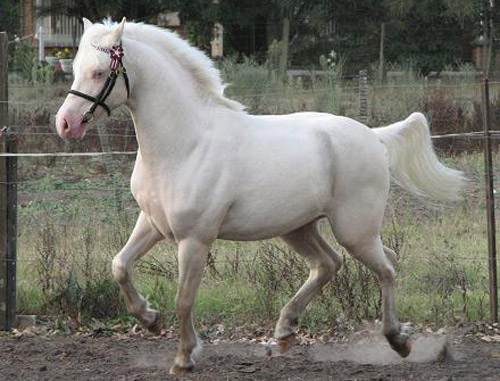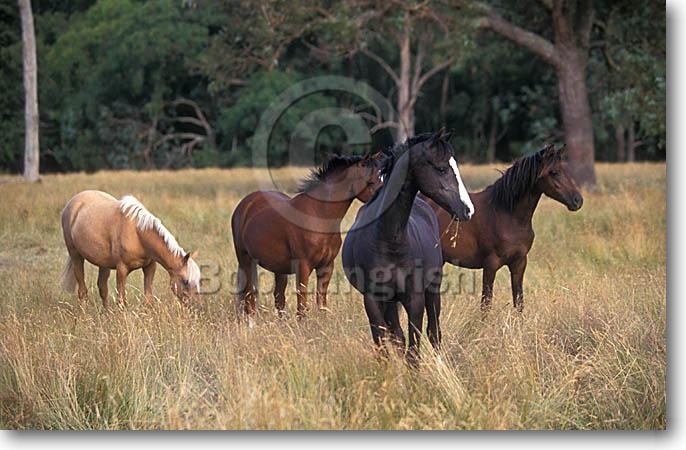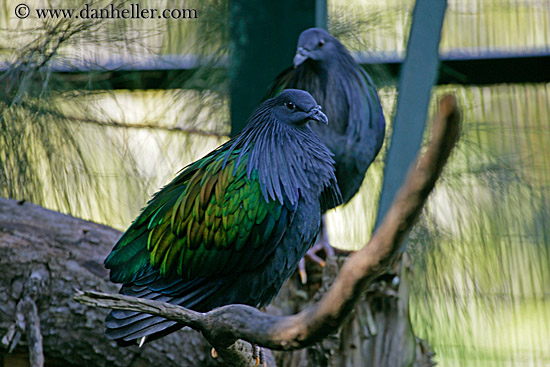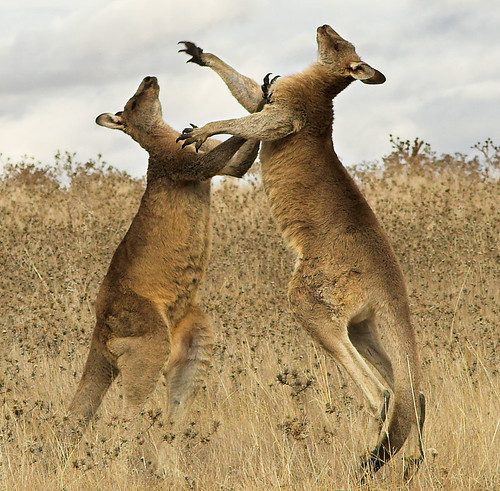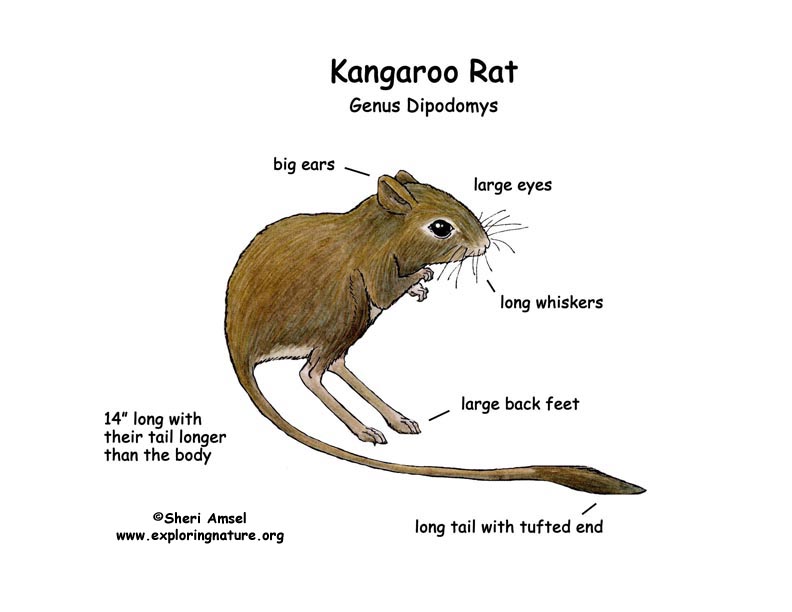 Kangaroo rats have strong back legs and can jump like a kangaroo.Kangaroo rats, genus Dipodomys, are small rodents native to North America The common name derives from their bipedal form: as they hop in a manner similar to the much larger kangaroo, although they are not related. It has been noted that they are not properly characterized as "rats" at all.Kangaroo rats generally live in arid and semi-arid areas particularly on sandy or soft soils which are suitable for burrowing. However, kangaroo rats can vary in both geographic range and habitat. In particular, the Merriam kangaroo rat ranges though Southern California, Utah, Southwest New Mexico, Arizona, and northern Mexico and live in areas of low rainfall and humidity and high summer temperature and evaporation rates.They can be found in areas of various elevations ranging from below sea level to about 4500 feet.The Merriam kangaroo rat lives in stony soils including clay's gravel and rocks, which is harder than soils preferred by some other species like the Banner-tail kangaroo rat.
Kangaroo rats have strong back legs and can jump like a kangaroo.Kangaroo rats, genus Dipodomys, are small rodents native to North America The common name derives from their bipedal form: as they hop in a manner similar to the much larger kangaroo, although they are not related. It has been noted that they are not properly characterized as "rats" at all.Kangaroo rats generally live in arid and semi-arid areas particularly on sandy or soft soils which are suitable for burrowing. However, kangaroo rats can vary in both geographic range and habitat. In particular, the Merriam kangaroo rat ranges though Southern California, Utah, Southwest New Mexico, Arizona, and northern Mexico and live in areas of low rainfall and humidity and high summer temperature and evaporation rates.They can be found in areas of various elevations ranging from below sea level to about 4500 feet.The Merriam kangaroo rat lives in stony soils including clay's gravel and rocks, which is harder than soils preferred by some other species like the Banner-tail kangaroo rat. Kangaroo rats are primarily seed eaters They will, however, sometimes eat vegetation at certain times of the year and some insects. They have been observed storing the seeds of mesquite, creosote, bush, purslane, ocotillo and grama grass in their cheek pouches. Kangaroo rat will store extra seeds in seed caches. This caching behavior has an impact on the rangeland and croplands where the animals live. Kangaroo rats must harvest as much seeds as possible in as little time as possible. They needs to decrease the time away from their burrows as they are cool and dry. In addition, being away from their burrows also makes them vulnerable to predators.Kangaroo rats inhabit overlapping home ranges. These home ranges tend to be small with much activities within 200-300 ft and rarely 600 ft. Home range size can vary within species with Merriam kangaroo rats having larger home ranges than Banner-tailed kangaroo rats. Recently weaned kangaroo rats move into new areas not occupied by adults. Within its home range, a kangaroo has a defended territory consisting of its burrowing system.Kangaroo rats have promiscuous mating system. Their reproductive output is highest in summer following high rainfalls. During droughts and food shortages, only a few females will breed. It appears that kangaroo rats can assess their local conditions and adjust their reproductive efforts accordingly. Merriam kangaroo rats breed between February and May and produce two or three litters each. Before mating, the male and female will perform nasal-anal circling until the female stops and allows the male to mount her. A Merriam kangaroo rat female will allow multiple males to mount her in a short period of time, perhaps to ensure greater chances of producing offspring. Mating in Banner-tailed kangaroo rats involve more chasing and foot drumming in the male before the females allows him to mate. Banner-tailed kangaroo rats mating on mounds and males are more successful in chasing away rival males.The gestation period of kangaroo rats last 22-27 days.
Kangaroo rats are primarily seed eaters They will, however, sometimes eat vegetation at certain times of the year and some insects. They have been observed storing the seeds of mesquite, creosote, bush, purslane, ocotillo and grama grass in their cheek pouches. Kangaroo rat will store extra seeds in seed caches. This caching behavior has an impact on the rangeland and croplands where the animals live. Kangaroo rats must harvest as much seeds as possible in as little time as possible. They needs to decrease the time away from their burrows as they are cool and dry. In addition, being away from their burrows also makes them vulnerable to predators.Kangaroo rats inhabit overlapping home ranges. These home ranges tend to be small with much activities within 200-300 ft and rarely 600 ft. Home range size can vary within species with Merriam kangaroo rats having larger home ranges than Banner-tailed kangaroo rats. Recently weaned kangaroo rats move into new areas not occupied by adults. Within its home range, a kangaroo has a defended territory consisting of its burrowing system.Kangaroo rats have promiscuous mating system. Their reproductive output is highest in summer following high rainfalls. During droughts and food shortages, only a few females will breed. It appears that kangaroo rats can assess their local conditions and adjust their reproductive efforts accordingly. Merriam kangaroo rats breed between February and May and produce two or three litters each. Before mating, the male and female will perform nasal-anal circling until the female stops and allows the male to mount her. A Merriam kangaroo rat female will allow multiple males to mount her in a short period of time, perhaps to ensure greater chances of producing offspring. Mating in Banner-tailed kangaroo rats involve more chasing and foot drumming in the male before the females allows him to mate. Banner-tailed kangaroo rats mating on mounds and males are more successful in chasing away rival males.The gestation period of kangaroo rats last 22-27 days.The young are born in a fur-lined nest in the burrows. They are born blind and hairless with males faster than females. For the first week young Merriam kangaroo rats crawl around until their second or third week which is when their hind legs develop. At its time, they young become independent. Banner-tailed kangaroo rat are weaned between 22-25 days. Offspring remain in the mound for 1-6 more months in the maternal caches.





